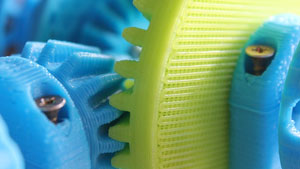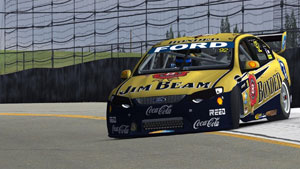 The differential (or diff, for short) allows the left and right wheels to rotate independently, which helps balance the car through corners. Its configuration determines how much of the torque coming off the engine is transferred to each wheel. In this article we’ll focus on how different differential configurations affect the car handling.
The differential (or diff, for short) allows the left and right wheels to rotate independently, which helps balance the car through corners. Its configuration determines how much of the torque coming off the engine is transferred to each wheel. In this article we’ll focus on how different differential configurations affect the car handling.
If you’re interested in the mechanical workings of a differential, we recommend you check out the following videos: ‘How a Differential Works?’, ‘Understanding Limited Slip Differential’, and ‘Working of Limited Slip Differential’.
Locked differential (also known as a spool)
The spool is essentially a solid axle connection between the left and right wheels, or a fixed differential. Some people weld their differential fixed, for instance to allow easier drifting. A spool ensures both left and right tires rotate at exactly the same speed.
 A spool gives you good traction accelerating on a straight line, but the handling of the car is compromised during turning. When going around a corner, the outside tire has to travel a longer distance. So, the inside is forced to rotate faster than it needs for the turn radius and hence spins. This causes stress (wear) on both tires and the drive train. In terms of handling, this causes understeer when decelerating, and oversteer when accelerating.
A spool gives you good traction accelerating on a straight line, but the handling of the car is compromised during turning. When going around a corner, the outside tire has to travel a longer distance. So, the inside is forced to rotate faster than it needs for the turn radius and hence spins. This causes stress (wear) on both tires and the drive train. In terms of handling, this causes understeer when decelerating, and oversteer when accelerating.
Spools are typically used in karts, drag racecars, some oval race cars and some road race cars. Notable road car examples on iRacing are the V8 Supercars.
Open differential
A completely open differential allows the left and right tires to rotate entirely independently. This helps with turning. The open diff also allows more torque to be transferred towards the less loaded tire. This is quite unfavorable when one tire is on a slippery surface like mud, grass, ice or wet track markings, as the tire on the slippery surface will end up spinning, consuming most of the available engine torque. Consequently, there may not be enough torque going to the tire on the grippy surface, so acceleration would suffer.
In terms of handling, an open diff gives you oversteer at the entry of a corner, and will understeer at the exit. Most open diff cars are underpowered, however, high-powered open diff cars (or cars with open limited slip differential), may spin the inside wheel on corner exit. Excessive spin on the drive axle cause that axle to lose grip causing sudden oversteer (on RWD cars) or understeer (on FWD cars).
The open diff presents challenges in low traction conditions. In addition, the balance changes suddenly through the corner, which is not desirable for a race car, as you are giving up traction. On iRacing, the Pro Mazda, Skip Barber and Spec Racer Ford are open diff cars.
Locking differential
A locking differential can behave both as an open differential and as a spool. The locker mechanism unlocks the wheels during corner entry and mid-corner and locks them on corner exit, when on the power. A popular locking differential is the Detroit Locker, used in NASCAR.
Limited slip differential
As we saw, both a spool and an open diff have their issues, especially in racing conditions. Most race cars thus use a limited slip differential, which offers the best of both worlds. You can tune the differential to behave as an open differential in certain conditions. And you can tune it to apply a certain amount of “lock” between the left and right tires. By optimizing the diff setup, you can improve your car handling through a corner.
Adjusting a limited slip differential
A limited slip differential might have any (or none) of the following adjustments available, but here’s what they do:
- Number and/or type of of friction & clutch plates: the more friction and clutch plates, the more locking happens through all corner phases.
- Preload spring: defines the base amount of force that is applied on these friction and clutch plates. With small enough (or negative) preload, you can open up your differential. The heavier the preload spring, the easier your differential will lock.
- The Ramp angle: this can be used to tune the amount of locking under deceleration/acceleration. For instance 50/80, where 50 stands for the locking during deceleration into corners, and 80 for acceleration out of corners.
Each car in iRacing has a different differential settings available, under different names and configuration values. For example, here are the differential settings for the McLaren MP-30:

Up to you
You can achieve identical handling with completely different diff builds/configurations. As always, it’s important to experiment with each setting to gain experience with the car and to develop an instinct for how to approach differential setup. However, here’s a starting point when you think about each diff setting:
- You want to start with changing the number of plates to control how quickly the differential builds up locking force. The more locking force, the more it behaves like a locked diff and vice versa, the less locking force, the more it behaves like an open diff.
- You may consider the preload as a form of general trigger for sensitivity. It set a minimum amount of locking force that is applied at all times.
- You’d consider changing the ramp when you want to modify handling under braking (entry) without impacting the handling under acceleration (exit).

